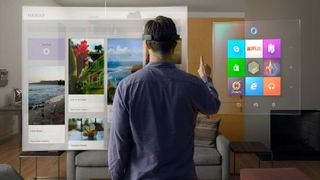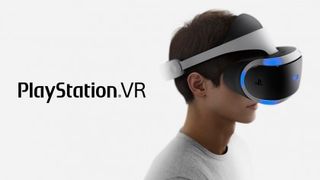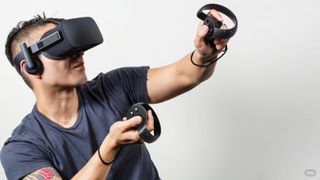The Games Developers Conference – shortened by nearly everyone to "GDC" – is a show unlike any other.
While E3 focuses on spectacle and showmanship and PAX puts the spotlight on fans who keep the industry going strong, GDC is about the technical side of games. It explores how they're made and why developers spend years of their lives making them.
And while it's a great convention for game developers, it's also one of the best for tech enthusiasts, too. In between the heart-warming stories of developers succeeding in an increasingly crowded scene, new, incredibly ambitious products are revealed.
In 2015, we saw the Nvidia Shield Android console, Steam Link and finalized Steam Controller. In 2014 we saw the first prototype of PlayStation VR, back then called "Project Morpheus," and some of the first VR games. GDC 2013 was all about the Ouya (which then later flopped) and rumors of next-gen systems.
But enough about that. Those GDCs live in the annals of history.
The GDC you should care about is going to take place on March 14 through the 18th at the Moscone Convention Center in San Francisco, California.
This year, GDC 2016 will once again star PlayStation's first virtual reality headset and rumors of next-gen systems (this is the year we're supposed to see the Nintendo NX, after all) but that's just the tip of the so-real-you-can-almost-touch-it iceberg.
Get daily insight, inspiration and deals in your inbox
Get the hottest deals available in your inbox plus news, reviews, opinion, analysis and more from the TechRadar team.
Rather than run through all the big names in attendance – including Intel, Amazon Google, Crytek, Nvidia and Twitch among others – I'll focus instead on the four companies set to raise the bar at GDC: Microsoft, Sony, Oculus and AMD. While the aforementioned companies will certainly share the limelight, chances are high that these four will be who everyone is chattering about for the weeks to follow.

Microsoft: Hololens, DirectX 12 demos and Windows 10
Microsoft will likely return this year to GDC with HoloLens in hand, packing a more functional device than we saw at the Halo 5: Guardians booth at E3 2015.
I'd love to see a rock-solid release date, pricing information or, at least, an exact date for the first batch of $3,000 (AU$4,150, £2,000) developer kits that are supposedly launching Q1 2016. We can ballpark this information given what we know about the dev kit, but, until it comes from Phil Spencer's mouth, I don't consider it set in stone.
Beyond the ultra-expensive hardware, I'd like to see a few more DirectX 12 demos. While on stage at GDC 2015, Spencer said that DX12 was going to revolutionize gaming on Xbox One and PC.
He said, in so many words, that this would be the key to bringing higher-fidelity games to consoles and will bridge the performance gap between Xbox One and gaming PCs. Without seeing more than a few games that use the tech, though, it's hard to say whether Microsoft's claims ring true.
Finally, Microsoft's guaranteed slam dunk with developers: Windows 10 universal apps.
We've heard how easy it'd be to create experiences – games and apps – that could be developed using the Microsoft Universal Windows Platform and extended to any Windows device. Now, it's time to see just how far that system has come in the seven months since Windows 10's launch.

Sony: PlayStation VR, System Software 3.5 and Nathan Drake
We knew from the outset that Sony was going to have a big year. The PS4 has sold over 30 million units worldwide, and the successful expansion of its PlayStation Vue and PlayStation Now programs have proven that Sony can not only do hardware, but it's darn good at coming up with new software, too.
One of the biggest challenges of the show for me, therefore, will be trying to get my first peek at the latest system software update. Sony announced that it would be accepting beta testers recently to help troubleshoot the new batch of code, but it has yet to say what exactly would change in the PS4 software's latest iteration.
If that falls through, however, I think everyone will enjoy checking out – or if you're remote, hearing about – the near-final version of PlayStation VR.
If Sony is smart, it can upend the entire show by announcing the VR headset's release date and finalized price. An in-house-made game would be great, too, but I'm not holding my breath for designer David Jaffe to jump on stage and announce a God of War VR game.
Speaking of first-party games, you can be sure Sony will use the venue to hype the launch of the upcoming Uncharted title, Uncharted 4: A Thief's End. Drake's last adventure goes on sale April 26, so long as it doesn't face yet another delay.
While the Uncharted series has become sort of a poster child for PlayStation, it wouldn't be out of the ordinary for Sony to use GDC to unveil another game from one of its close developers. Sony used the space in 2007 to show off LittleBigPlanet for the first time, and more recently spotlighted the horror game Until Dawn at the show.

Oculus and AMD: The Rift and other VR goodies
With the big – well, bigger – two console makers out of the way, let's focus now on the real meat of GDC 2016: the Oculus Rift and virtual reality on PCs.
As fellow techradar editor Dave James smartly pointed out back in January, this year's GDC is all about virtual reality gaming:
"... Over 10% of the 400 lectures, panels, tutorials and round-table discussions are going to be concerned directly with the topic of VR - with likely even more touching on the subject indirectly over the long week of developer sessions. That's a big change from last year where there were only 13 sessions devoted to the development challenges of VR, a yearly increase of over 200%."
It's good then the first two days of GDC 2016 will be entirely devoted to the inaugural Virtual Reality Developers Conference, an off-shoot of GDC that will focus exclusively on building new experiences for Oculus Rift, HTC Vive and PlayStation VR.
And while VR will be the main attraction at this year's show, it's looking like AMD plans on stepping up this year for a big announcement of their own.
AMD is holding a keynote at 4 pm PST on March 14 that will put "the latest gaming and virtual reality technologies" on display. This is prime time to unveil its next flagship GPU or to enter into new territory with their own VR headset.
On a less tangible but still extremely interesting note, AMD will also likely talk more about the capabilities of DisplayPort 1.3. This upcoming iteration of the display standard can power two 4K UHD images at 60 frames per second simultaneously, and AMD plans on getting it into future graphics cards.
By far, this is Oculus's show more than anyone else's. It's the company's last chance to show off the greatest games and experiences it plans on releasing alongside the Rift on March 28.
Nick Pino is Managing Editor, TV and AV for TechRadar's sister site, Tom's Guide. Previously, he was the Senior Editor of Home Entertainment at TechRadar, covering TVs, headphones, speakers, video games, VR and streaming devices. He's also written for GamesRadar+, Official Xbox Magazine, PC Gamer and other outlets over the last decade, and he has a degree in computer science he's not using if anyone wants it.

